Imagine a circle that contains all of human knowledge:
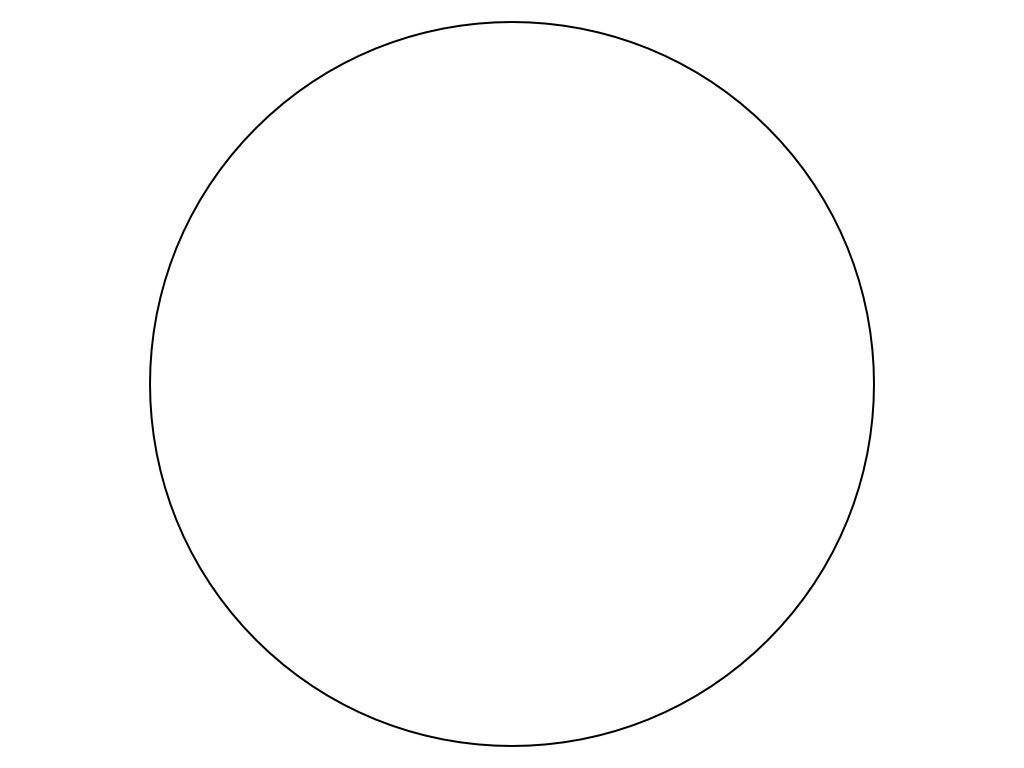
By the time you finish elementary school, you know a little:
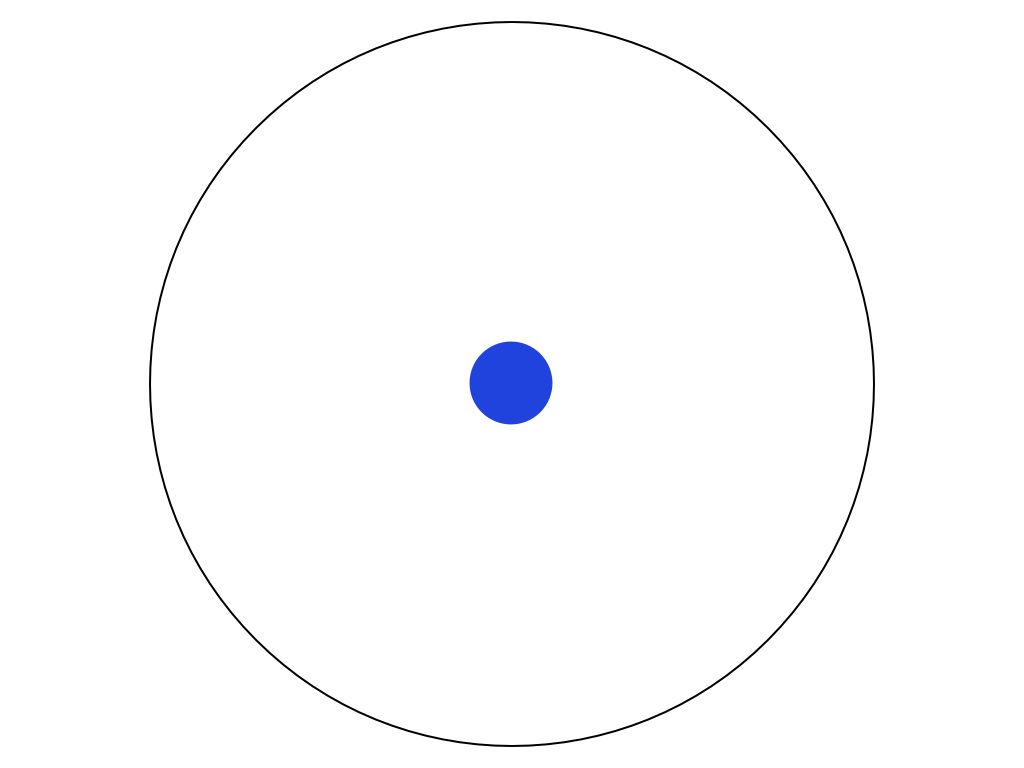
By the time you finish high school, you know a bit more:
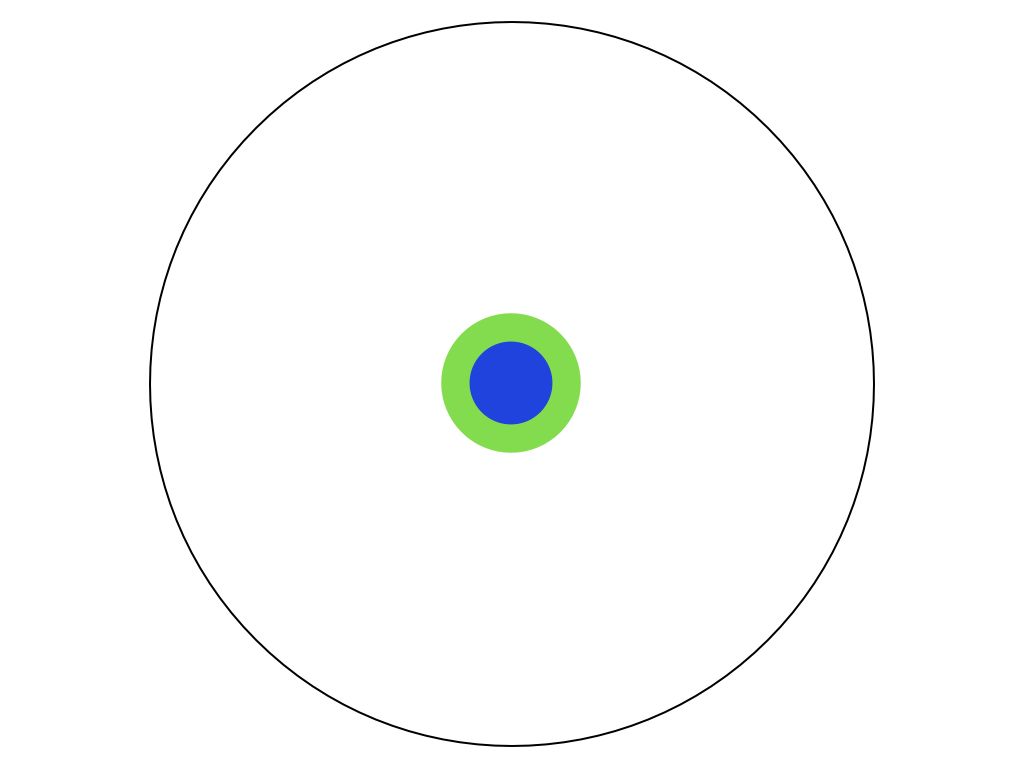
With a bachelor's degree, you gain a specialty:
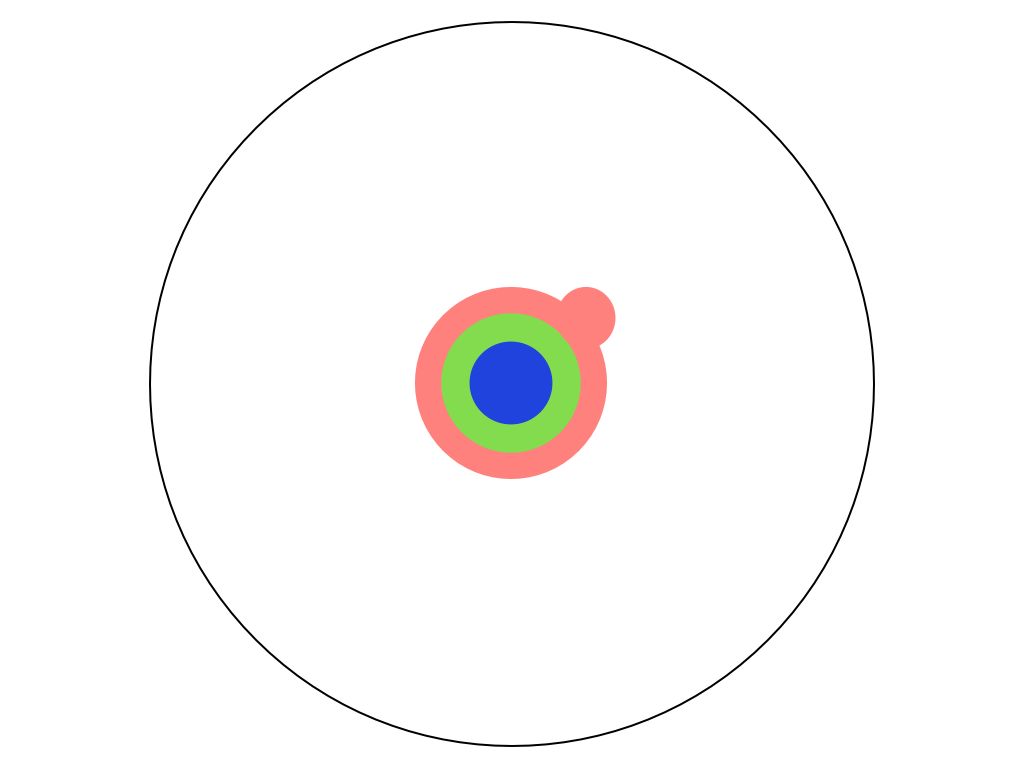
A master's degree deepens that specialty:
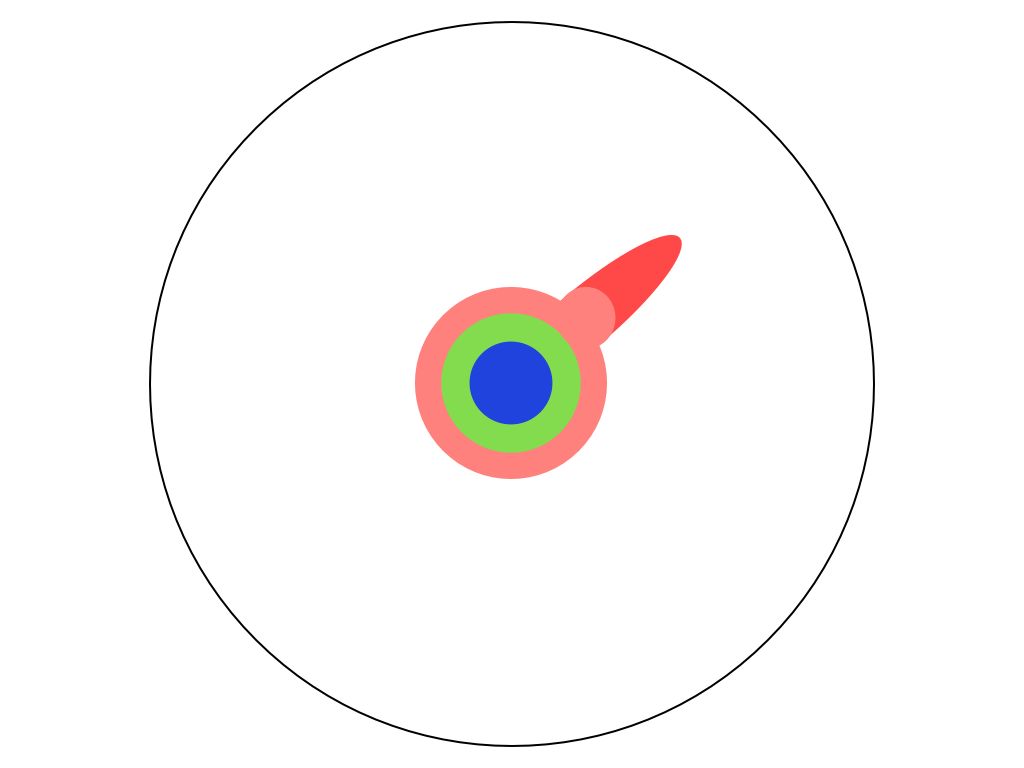
Reading research papers takes you to the edge of human knowledge:

Once you're at the boundary, you focus:
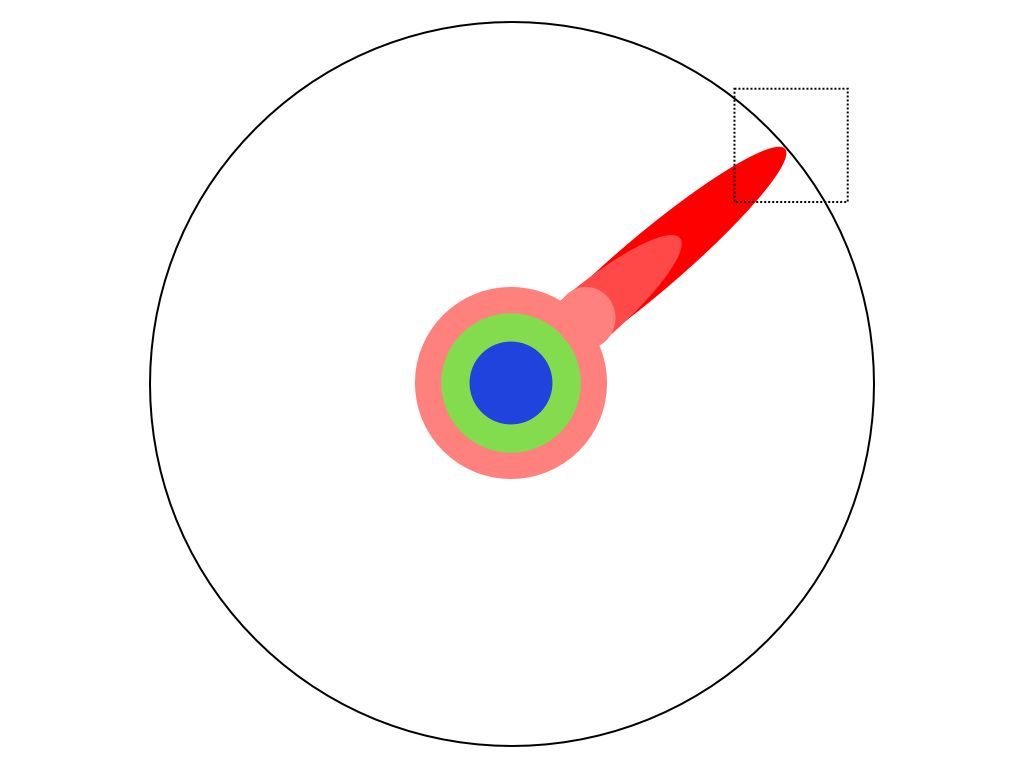
You push at the boundary for a few years:

Until one day, the boundary gives way:

And, that dent you've made is called a Ph.D.:

Of course, the world looks different to you now:

So, don't forget the bigger picture:
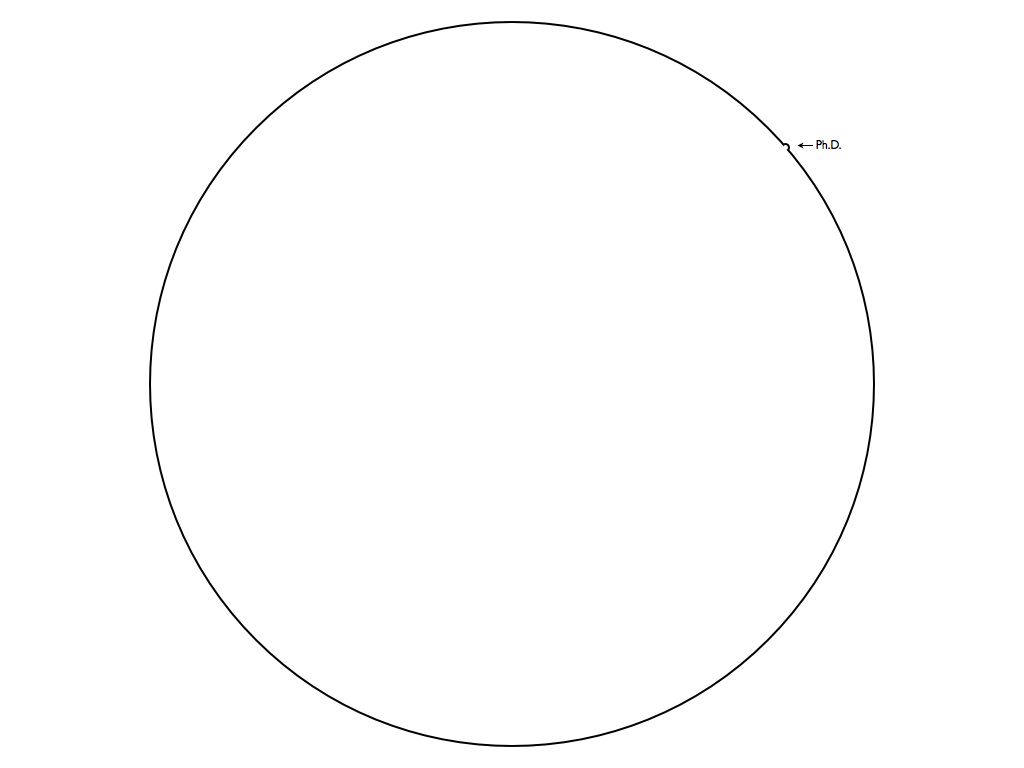
Keep pushing.
Related posts
- Recommended reading for grad students.
- What every CS major should know.
- How to get into grad school.
- Advice for thesis proposals.
- Productivity tips for academics.
- Academic job hunt advice.
- Successful Ph.D. students: Perseverance, tenacity and cogency.
- The CRAPL: An open source license for academics.
- The shape of your problem.
If you like these posts, then I recommend the book A PhD Is Not Enough:
Get it in print; fund students; save lives
By request, a print version of The Illustrated Guide to a Ph.D. is on sale.
Any and all proceeds will fund graduate students whose work may impact the discovery, diagnosis or treatment of genetic disorders.
Any and all proceeds will fund graduate students (and postdocs) doing work in biology that may impact treatment of diseases of cellular metabolism.
Update: If you're interested in being that postdoc, get in touch with me!
It is available at $6.50 thanks to Hewlett-Packard's high-quality on-demand publishing service, MagCloud.
It's sixteen pages, saddle-stitch bound and in full color.
It's a good gift for new students, the recently defended and relatives thereof.
Why biology?
If you zoom in on the boundary of human knowledge in the direction of genetics, there's something just outside humanity's reach:

My wife and I chose to start funding these graduate students after we learned that our son has a rare, fatal genetic disorder.
It may be too late for my son, but it's not too late for other children.
Even one child suffering is one child too many.
The only way to end this kind of suffering is science.
And, the best way to do science is through graduate students.
Update: When I first wrote this post, my son's specific disorder was unknown. Thanks to a scientific advance made in genetic diagnostics--specifically exome sequencing--we were able to isolate the mutations in my son's genome and determine that he is the very first documented case of a new disease: N-glycanase deficiency.
One small dent in the circle of knowledge; one giant leap for my son.
You can read the full story in a new post: Hunting down my son's killer.
License: Creative Commons
I receive numerous requests to reproduce this work, and I'm happy to grant them all, subject to three small conditions:
- Please attribute the original work to me (Matt Might) and link back to this page in your reproduction:
http://matt.might.net/articles/phd-school-in-pictures/
asThe Illustrated Guide to a Ph.D. - When you attribute, please also link my name,
Matt Might, to:http://matt.might.net/
- And, don't forget the "Keep pushing," at the bottom!
This work is licensed under the Creative Commons Attribution-NonCommercial 2.5 License.
That means you can share, copy, modify and reproduce this work as long as you attribute the original work to me and link back to it as outlined above.
However, you may not sell this work, or use it for commercial purposes. You may only distribute it free of charge. If you're not sure whether your use is a "commercial purpose," please send me an email.
If possible, please host the images on your own server instead of linking back to mine.
If you use it in a presentation, I'd love to hear feedback.
Here's an example attribution that satisfies the legal requirements:
Matt Might, a professor in Computer Science at the University of Utah, created The Illustrated Guide to a Ph.D. to explain what a Ph.D. is to new and aspiring graduate students. [Matt has licensed the guide for sharing with special terms under the Creative Commons license.]
If it helps, here's the corresponding HTML, which you can modify to suit your site's needs:
<a href="http://matt.might.net/">Matt Might</a>, a professor in <a href="http://www.cs.utah.edu/">Computer Science</a> at the <a href="http://www.utah.edu/">University of Utah</a>, created <a href="http://matt.might.net/articles/phd-school-in-pictures/">The Illustrated Guide to a Ph.D.</a> to explain what a Ph.D. is to new and aspiring graduate students. [Matt has licensed the guide for sharing with <a href="http://matt.might.net/articles/phd-school-in-pictures/#license"> special terms under the Creative Commons license</a>.]
And, of course, thank you for sharing!
Resources
Please let me know if you translate this post into another language.
- A slideshow version in PDF.
- French translation (by Pierre Poulin)
- Urdu translation (by Adnan Masood)
- Japanese translation (by Kimikazu Kato)
- UK English "translation" (as interpreted by Gabriel Egan)
- Brazilian Portuguese translation (by Kleber Jacinto)
- Turkish translation (by Y.Ercan Payidar)
- Spanish translation (by Ismael Peña-López)
- Italian translation (by Alessandro Ferrari)
- Indonesian translation (by Robin Malau)
- Greek translation (by Anestis Chatzidiakos)
- Korean translation
- Norwegian translation (by DION)
- Russian translation (by Shemra Rizzo)
- Hungarian translation (by Zoltan Prekopcsak)
- Chinese translation (by Yifeng Yuan)
- Simplified Chinese translation by (Dai Yi)
- German translation (by Paul Balzer)
- Persian translation (by Kian Abbasnejadi)
- Czech translation (by Lukas Kalous)
- Slovak translation (by Stano Bustor)
- Serbian Translation (by Lazar Kovacevic)
- Swedish Translation
- Filipino translation (by Andrew Pua)
- Italian translation (by Marco Fotino)
- Arabic translation (by Areeb Alowisheq)
- Vietnamese translation.
- Polish translation.
- Dutch translation.
- Ukranian translation.
- Hebrew translation (by Regev Elya).
- Belarussian translation.
- Catalan translation by Sebas Mas.
- Finnish translation by Joutsiniemi Anssi.






















 167
167











 被折叠的 条评论
为什么被折叠?
被折叠的 条评论
为什么被折叠?








